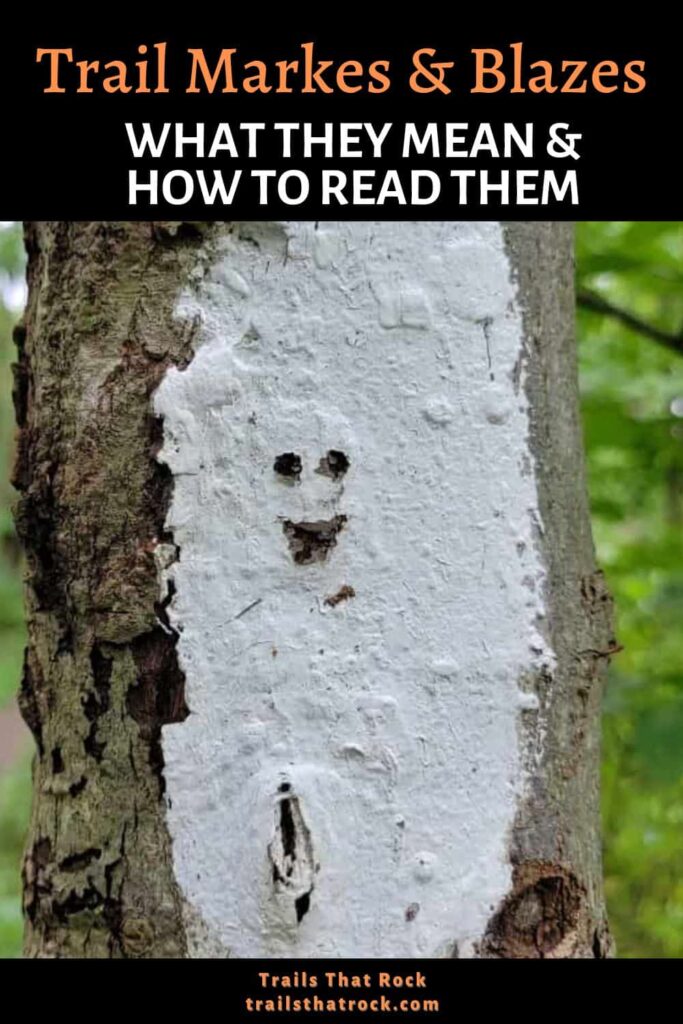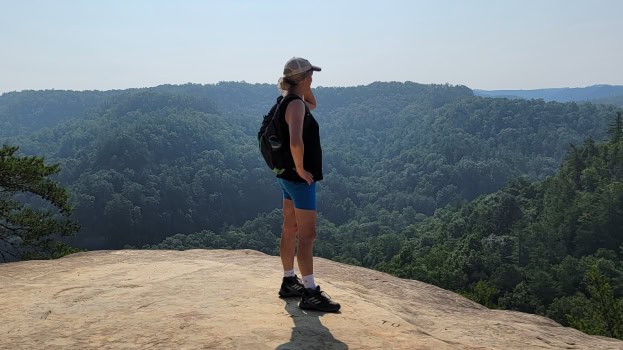You don’t want to get lost while hiking! And one of the best ways to stay on course is to follow trail markers and blazes. But that isn’t always easy if you don’t know how to read blazes and other trail markers.
Trail blazes and markers help hikers stay on the path. They also indicate where a trail begins and ends and if multiple trails intersect. But if you don’t know what they mean, it can be confusing to follow.
The guide below shares typical trail markers and their meanings so you can be ready for your next adventure!
Disclosure: Some of the links below are affiliate links, meaning, at no additional cost to you, we may receive a commission if you click through and make a purchase.
5 Types Of Trail Markers You May Encounter on Your Hike
Blazes
In North America, blazes are one of the most common ways to mark a trail.
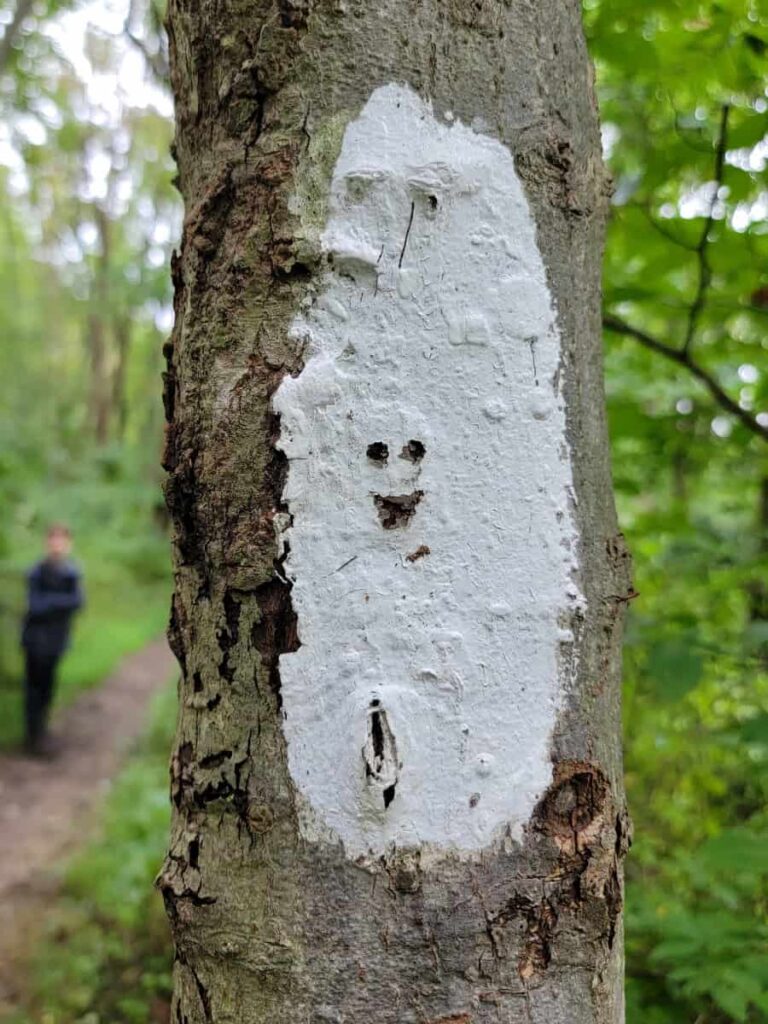
Blazes are usually painted in a 2×6-inch stripe on trees, rocks, and other stationary objects to indicate that you are on the correct trail. They are typically at eye level when on trees. However, you may have to look down (or up) at the rocks on your trail if there are no trees along the route.
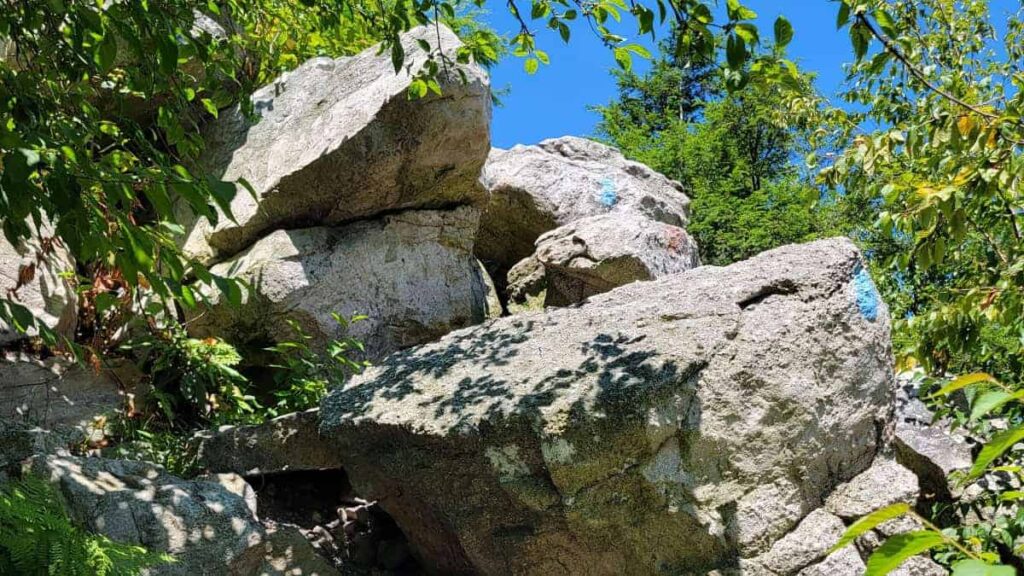
Blazes not only mark the direction of the trail but also indicate which trail you are on. For example, they can be a single color (white for the Appalachian Trail) or multiple colors (white with a red dot for the Mount Tammany Red Dot Trail).
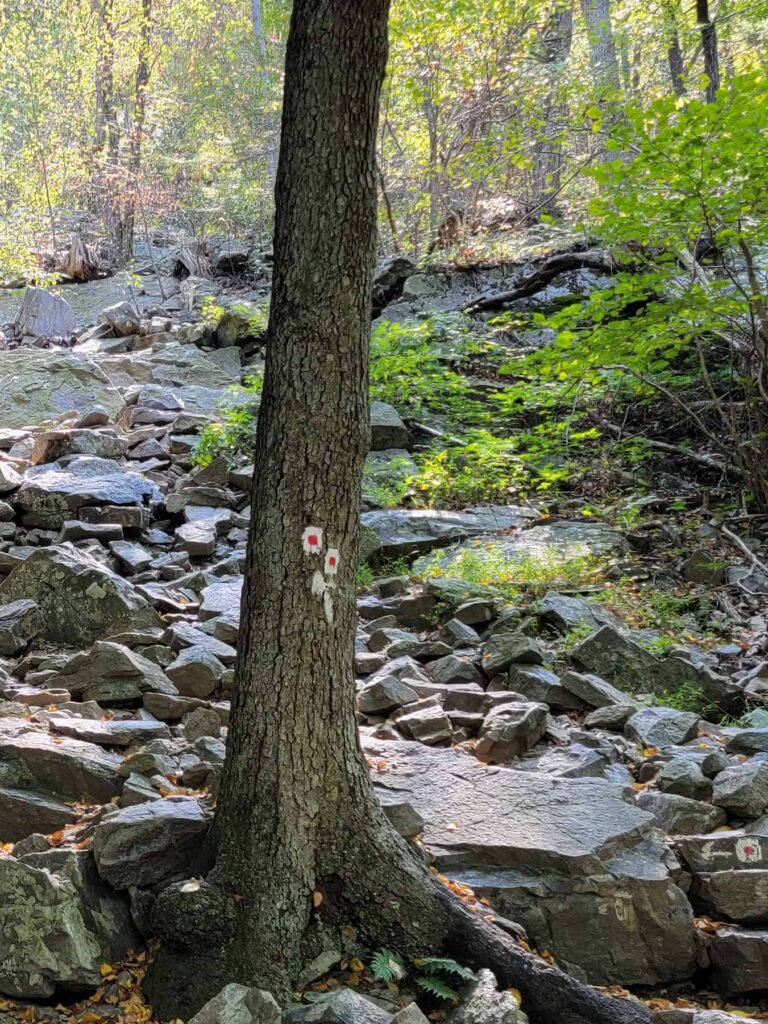
To keep you on the correct course, blazes use a code to indicate the trail starting, ending, or changing directions. More on that below.
Affixed Markers
Instead of painted blazes, trails may have colored markers nailed to trees. They can be made from plastic, metal, or wood and come in various shapes and sizes. Sometimes, the marker has the trail name or park name on it, and other times, it is just a solid color.
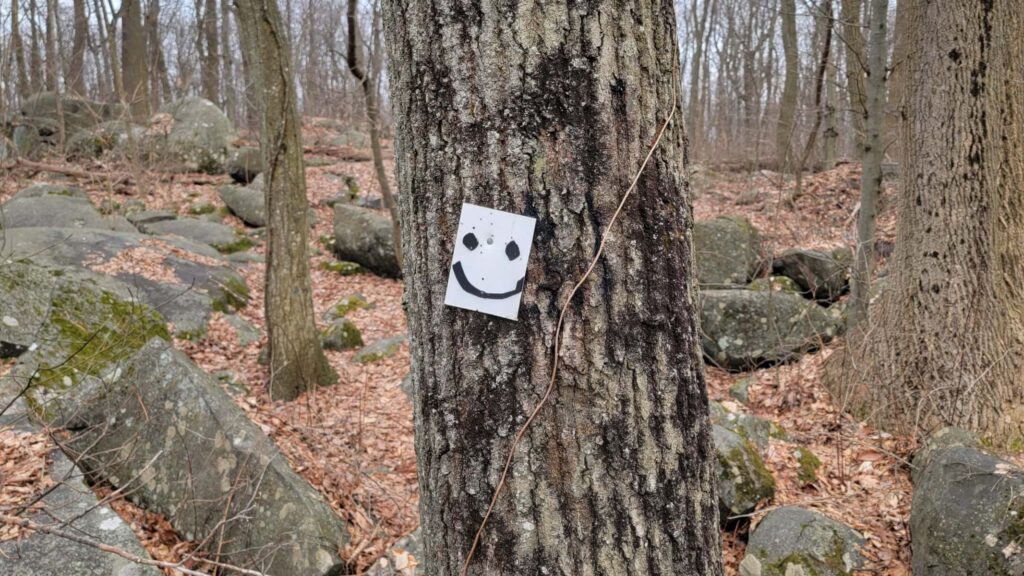
Ribbons/Flags
We’ve encountered ribbons tied to trees along a few different hiking trails. These might be used when trails are being rerouted or other markers aren’t as obvious.
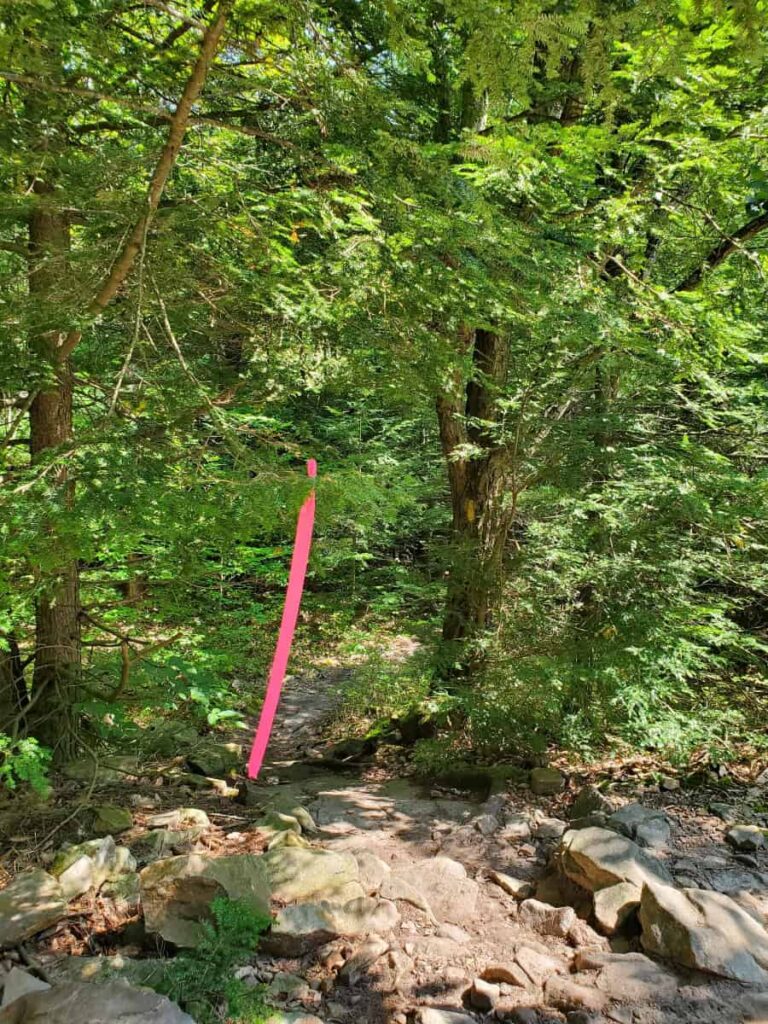
Trail Signs/Posts
Trail signs have become more common in state parks, county parks, preserves, and privately owned properties. They will typically mark the start of the trail and any intersecting trails. More often, these places will have a mix of trail signs and blazes to guide you on your hike.
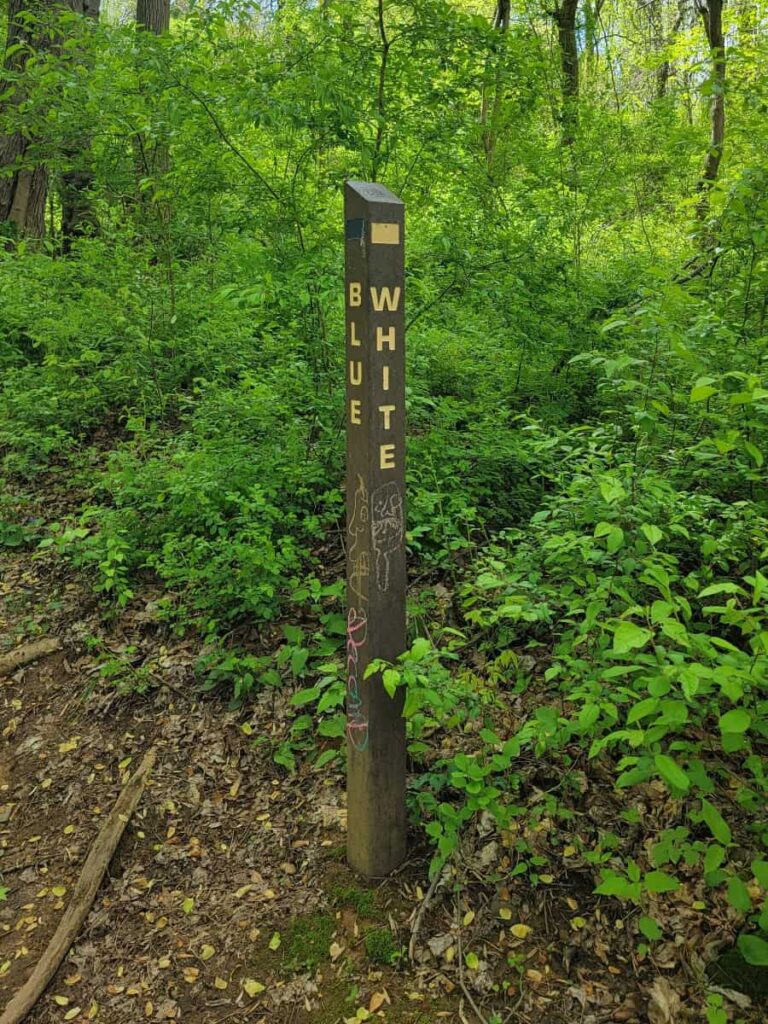
Some trail signs indicate the distance from your starting point to the primary destination, like an overlook or waterfall.
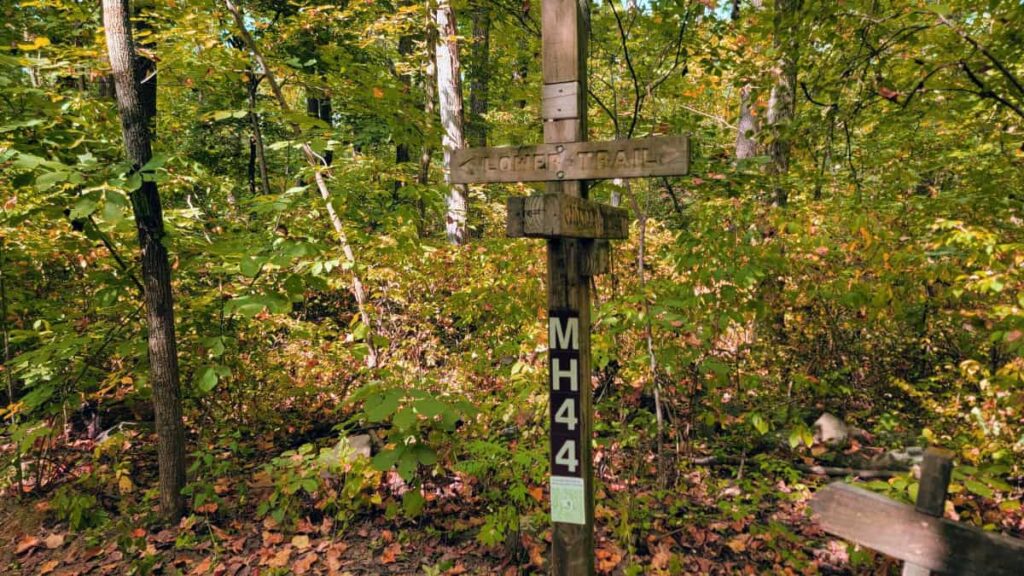
Other trail signs may help you find your position on a map, like the trails at Monocacy Hill in Pennsylvania.
Cairns
Cairns are piles of rocks used where there are few to no trees, typically out west or above the treeline. They are used to mark trails where trees and other vegetation are scarce, and the ground cannot easily hold a signpost. Since they need to be visible from the previous cairn, these rock piles can be as big as six feet tall.
You may encounter cairns along trails in the northeastern United States, like in Acadia National Park, but unless they are above the tree line, they were most likely made by other hikers and are not made to mark the trail.
Good to know: Do not create new cairns along the trail. New cairns can disturb the environment and create confusion for other hikers.
How to Read Painted Trail Blazes
As mentioned above, painted trail blazes mean different things depending on the number of markings and their positioning. Although not universal, they have become a standard for indicating direction and helping hikers navigate trails.
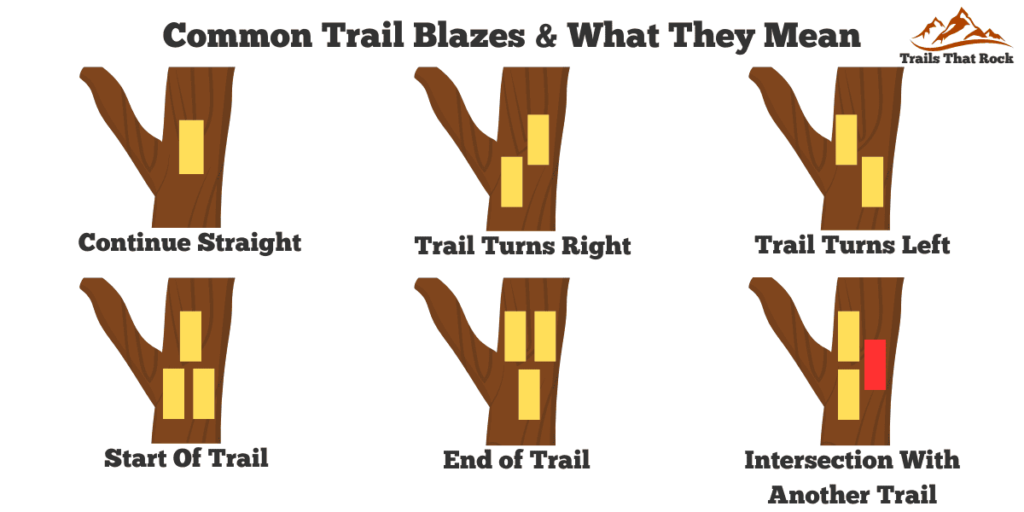
Start and End of Trail
Three painted blazes forming a triangle indicate a trail’s start or end. If the “tip” of the triangle is at the top, it shows the start. If it’s at the bottom, it means the trail has ended.
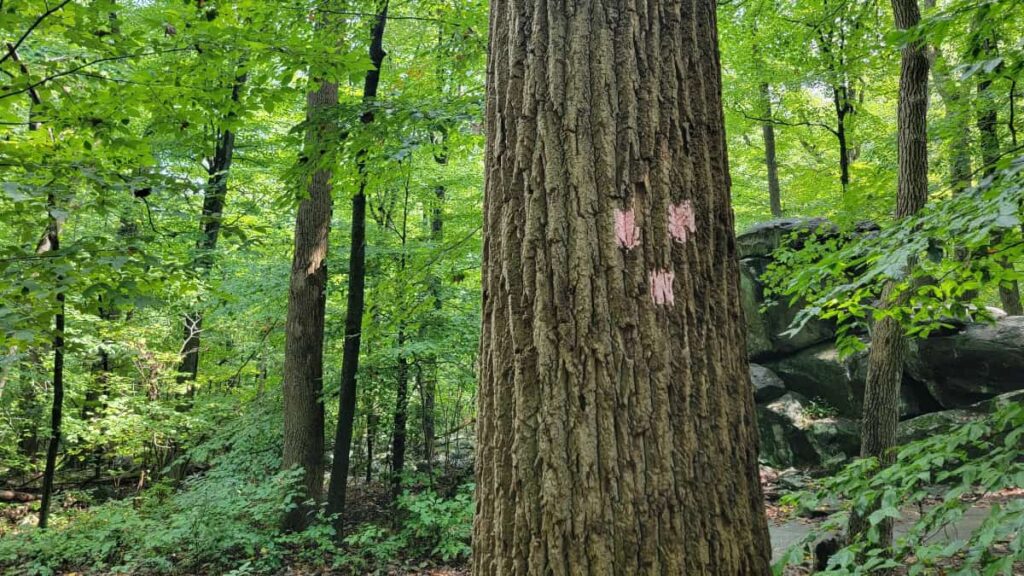
Intersection of a Trail
When trails intersect, you will see two different colored blazes. If the colors are stacked, the trails follow the same path until it is time for them to diverge. We experienced this on a hike to Sunfish Pond in Worthington State Forest, with the Douglas and Rockcores trails.
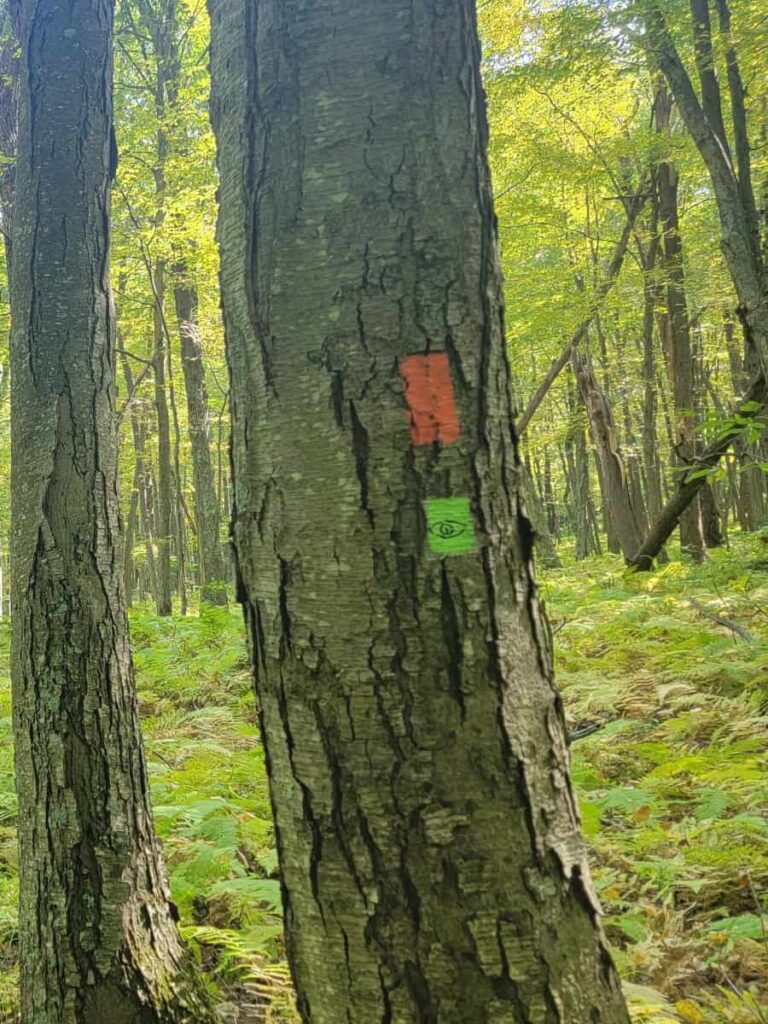
When a new trail spurs off the trail you’re on, it is indicated by a sideways triangle, the “tip” of which is the color of the spur trail.
Trail Direction
The primary purpose of painted trail blazes is to keep you going in the right direction. A single painted blaze tells you to keep going straight. Two offset blazes indicate a turn. The direction depends on the top blaze. If the top blaze is offset to the right, the trail turns right, and vice versa for the left.
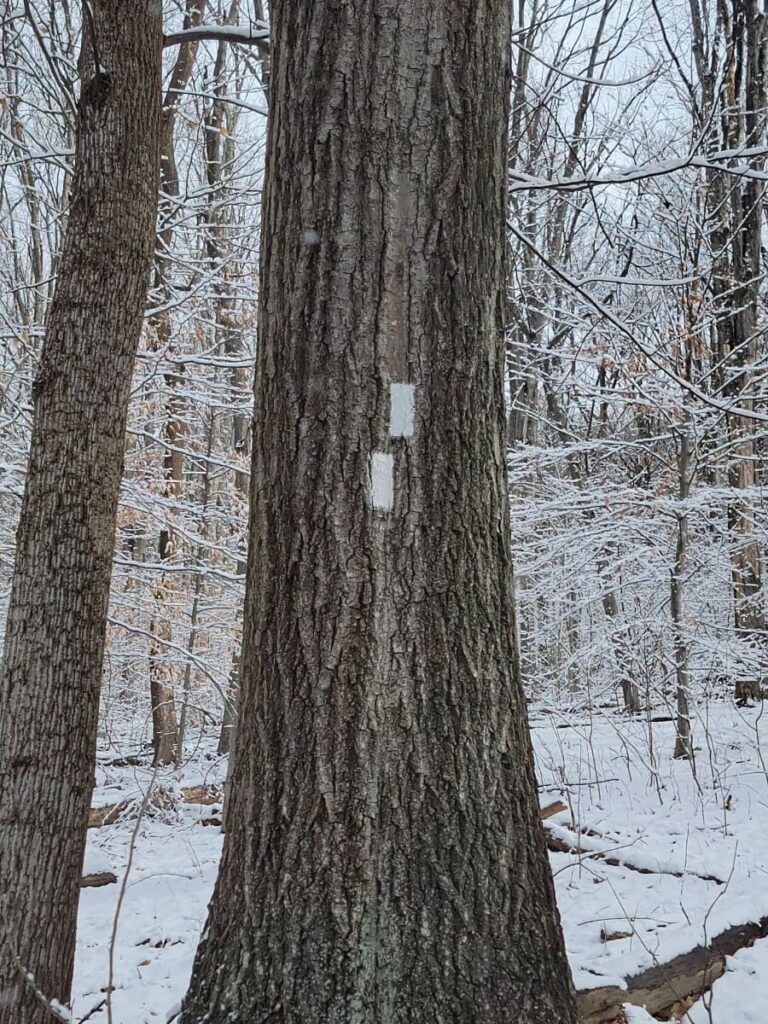
Use Caution
When two blazes of the same color are stacked, that indicates the hiker should use caution. It might be a steep section or some type of obstruction ahead.
What to Do If You Get Lost
Sometimes, you can get distracted and find yourself off-trail. You might be on a “rogue trail,” or you missed a turn.
- If you can see where you got off the trail, retrace your steps back to the marked trail.
- Before your hike, download and follow a trail app like AllTrails or Strava to keep you on the right trail.
Accidents happen, and if you find yourself lost or unable to locate trail blazes, remember to S.T.O.P.
- Stop: Once you realize you’re lost, stop moving. If you have a whistle, use it to signal your location.
- Think: Stay calm and assess your situation. Think carefully and ask yourself how you got there and what options you have.
- Observe: Look around—are you on the trail? Is it safe to stay where you are?
- Plan: If you’ve arranged a plan with your family or hiking group, follow it if possible. Also, decide what actions to take until help arrives.
Pin It For Later
